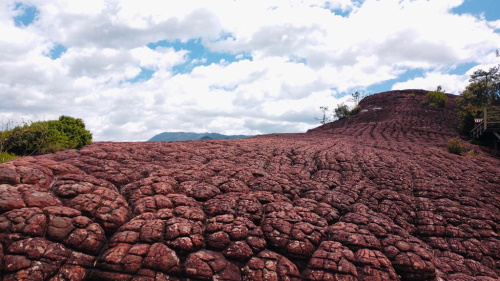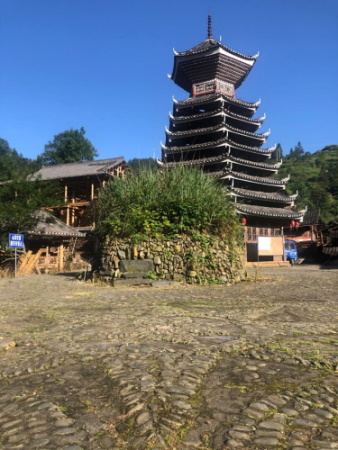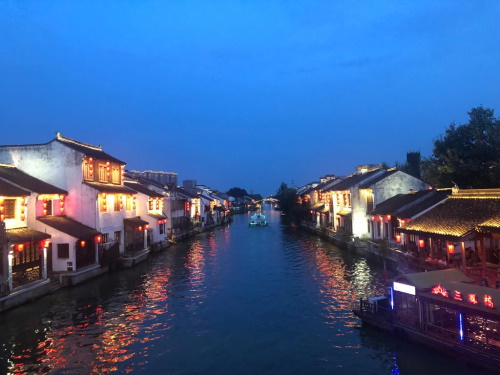Blog WH Travellers
Zos M. ... Completing China
Zos M., originally from the Philippines, started counting WHS since he relocated to Beijing in 2016 for work. Before the pandemic, he mostly used his vacation leaves for visits to Europe and Asia, but from 2020 on China was his focus. In October 2021, setting foot in Qinghai Hoh Xil, he “completed” China. That means that he has visited all its 56 WHS – a significant accomplishment as a foreigner with limited knowledge of the language. He has also been to about half of the country's 59 TWHS. Meet Zos below, while he shares his experiences as a WH Traveller in China.

How difficult is it to visit all of China’s WHS?
"At first, it was difficult. Not because of the inaccessibility of the sites but of my non-existent Mandarin. From 2016 to 2018, I only visited sites which are near big cities (Beijing, Chengdu, Chongqing, and Hangzhou). It was easier to find transportation. Then Didi and ridesharing and translator apps came along. It was easier. I could go to remote places. I could follow the bus routes and get off at the correct stop.
Like Europe, China is well connected. Most of the sites are within 2 hours commute from cities with high-speed trains or airports. I visited most sites using public transport and traveling alone. In some sites, especially those that can be done as weekend trips from Beijing, I asked (or forced) my friends to go with me.
There are four that I think difficult to reach:
- Qinghai Hoh Xil: You only have 2 options: (1) check it while taking the train to Tibet or (2) organize a driver in Golmud. I tried both and I will give more details in my review.
- Honghe-Hani Rice Terraces: It can be visited via a 10 hours bus ride from Kunming. I was relieved upon seeing other foreigners on the bus. It meant that I was on the correct bus! The base was still an hour away from the bus station via a local mini-van.
- Zuojiang-Huashan Rock Art: Finding English information on how to visit this site was difficult. I tried my luck taking the train from Hanoi to Nanning, and got off at dawn in Ningming after the border. The border guards questioned me for 20 minutes. They might have thought I was smuggling something, especially as I am Southeast Asian. Then at Ningming station, a man kept on following me and said something in Chinese. I was afraid that he would mug me. It turned out he had a car. He asked me if I wanted to hire him.
- Three Parallel Rivers of Yunnan: There is no way to visit this site by public transport or without taking an organized tour. I only visited Laojunshan component by hiring a driver from Lijiang."
How do you view the quality of the Chinese WHS?
"The variety of Chinese WHS is splendid. They have a good balance of showing the evolution of the China story, both from a cultural or natural perspective. They have sacred mountains, traditional towns, pre-historic sites, imperial and dynastic periods, and impressive natural wonders. They even have a fossil site and an archeological hominid site!
Huanglong for natural WHS and Silk Roads for cultural WHS impressed me the most. I really liked the travertine pools in Huanglong and how the waters run through the vegetation. Silk Roads is amazing for its variety of inscribed components. The best ones for me were Jiaohe and Yumen. The preserved ruins in the desert evoked the childhood wonder from watching Indiana Jones and reading history books.
Among the off-the-beaten-track sites, visiting Laojunshan component of Three Parallel Rivers is definitely an experience. I did not know what to expect but I was not disappointed with the view and the rock patterns. And I would still like to hike the other components of the Three Parallel Rivers of Yunnan. Another would be hunting the different components of the Grand Canal. You just don’t know what to expect on most components. Sometimes they are just a stretch of water. But most of the time are pleasant surprises like the beautiful colors of Wuxi old town at sundown or the nostalgic gentrified neighborhood of Bazi Bridge in Shaoxing or trying to find Hanjia Granary in the rural areas of Luoyang."
Is China reaching the bottom of its potential yet?
 |
"I don’t think China has reached its potential yet. There are still a lot in its TWHS that I think are a shoo-in for inscription – not because they are niche but they have strong arguments for OUV or filling the gap. Besides that, there are others not on the Tentative List that need to be considered. For example (1) colonial concessions (Shanghai, Tianjin, Qingdao, etc), (2) Great Tibetan Monasteries, (3) Modern China – the story of China’s industrialization needs to be represented, it is just a matter of identifying what they are.
Regarding favorite TWHS, Badain Jaran will not come as a surprise when inscribed next year. I have not seen a lot of desert landscapes but my 3-day stay inside the area was phenomenal. Driving around from dune to dune provides a good adrenaline high. Every time you reach a peak, you will be surprised by the steep downhill ride. The contrast of the orange sand, the blue sky, and the colored lakes are canvass-worthy. It is also intriguing how these many lakes exist for so long surrounded by the desert sand. I do think it should be inscribed as a mixed site with the very visible rock arts at Mandela component, the oldest Tibetan temple found in the middle of the desert, and hopefully, the ruins of Khara Khoto will be included.
Dong Villages also need to be inscribed. They are not focused on vernacular family dwellings but more on communal architecture. The different styles of drum towers built and decorated by each clan are very different from traditional Chinese drum towers. The community layout and planning are also unique. There are ponds and canals for water management, fish farming, and fire prevention. There are grain storage areas dotting across the village. Most of all, they built the village around the altars for their deity and ancestor worship."
Thanks for sharing these great insights, Zos. And keep those reviews of Chinese (T)WHS coming!
The attached pictures show the Laojunshan component of Three Parallel Rivers of Yunnan, the Wuxi component of the Grand Canal, and Dali Village Dong Drum Tower (all by Zos).
Els - 24 October 2021
Comments
Esteban Cervantes Jiménez (vantcj1) 27 October 2021
Congratulations for that feat, I envy you: many of my favorite WHS are indeed in China. The way in which cultural sites developed in natural sites, complimenting rather than overwhelming or inpoverishing them is for me a great lesson on sustainability.
Riccardo Quaranta 27 October 2021
Congratulations for your amazing achievement and thank you for having shared it with us together with your reviews and tips!
Astraftis 25 October 2021
Great feat and great source of inspiration!
And what's the next big WHS-country? :-D
Jay T 24 October 2021
Quite an impressive (and challenging) achievement!
Kyle Magnuson 24 October 2021
What an impressive accomplishment! I've enjoyed reading each review. Some of the great WHS of China have been only partially appreciated. Certainly the Silk Road and Grand Canal routes are amongst the most outstanding cultural serial sites around the world.
